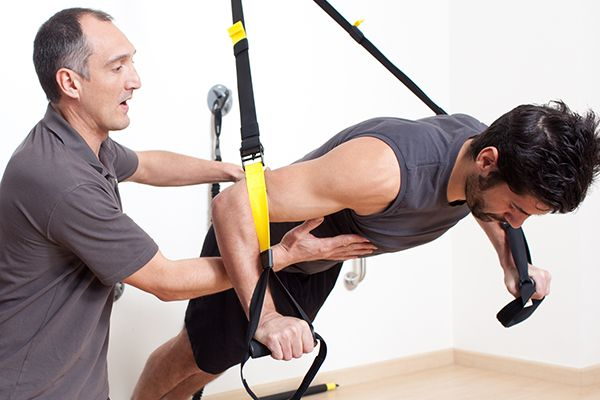Physical therapy is a powerful tool for recovering from illness, injury, and chronic pain. For some patients, however, physical therapy can do something even better — prevent these problems before they begin. Preventative physical therapy is not always well-known, but it is an important tool in keeping your body healthy and in preparing you to safely pursue the physical activities you love.
What is preventive physical therapy?
Preventative physical therapy is PT offered to patients as a way of preventing injuries and pain. This type of PT works by strengthening the body, improving mobility, and identifying potential problem areas before they become major issues.
Many patients attend physical therapy regularly, sometimes as often as once a week, in order to enjoy improved posture and mobility and in order to prevent injuries from their more rigorous physical activities (e.g. Running or hiking). Some celebrities, such as Jennifer Aniston, use PT as part of a wellness routine designed to keep them healthy.
When is preventative physical therapy useful?
Preventative physical therapy is particularly effective for patients looking to manage their health in rigorous, new, or unknown physical situations. Here is a look at five times you may benefit from seeing a physical therapist before you experience illness or injury.

Prehab for Rigorous Workouts
Patients who plan to begin rigorous workout routines, such as CrossFit, HIIT, boot camp, or even just workouts at the gym may want to participate in physical therapy as a way of preparing their bodies to handle the demands of these activities.
In particular, soft tissue massage and exercise programs that focus on strength, mobility, or alignment, can help the body resist injury during strenuous workouts. Preventative physical therapy is particularly useful for individuals who practice an otherwise sedentary lifestyle (e.g. Holding an office job) and wish to avoid injury during periodic and intense physical activity during exercise classes.
Identification of Potential Problems
It can be easy to overlook minor aches and pains, particularly for busy people who have little time to slow down and focus on their bodies. However, even a minor twinge could lead to injury during a hike or workout.
When patients take the time to check in occasionally with a physical therapist, they have the opportunity to identify whether those minor aches, pains, and twinges are actually major injuries waiting to happen.
For example, a physical therapist may identify an area of tightness, range of motion issues, postural imbalance, or even a weakened muscle during a preventative visit. They can help you to work on that issue now, before it becomes an injury at the gym or on the walking trail later on.
The result is that you can continue your daily life and activities without experiencing pain, paying for doctors’ visits, and ending up on a rigorous PT treatment plan in order to overcome a more serious injury.

Development of Personalized Exercise Routines
There are numerous physical activities you can pursue in order to exercise your body and stay healthy. However, not every exercise routine will be of equal benefit.
For example, an individual who spends all day sitting may benefit from an activity that gets them walking and running, while someone who engages in intense physical activity (such as running) may want to add less intense and more restorative activities, such as Pilates, to their routines.
A physical therapist can often help individuals to evaluate their physical needs in order to identify exercise routines that meet all of their requirements. Personalized exercise routines from an experienced physical therapist can prevent injury and maximize the benefits of your physical activity.
Assistance for New Physical Activity
Even patients who already exercise regularly can benefit from preventative physical therapy. For example, individuals who already walk but plan to train for a marathon, who already run but who plan to implement yoga, or who already go to the gym but plan to begin weightlifting may want to consult with a physical therapist first.
Physical therapy before undertaking a new activity can help you to identify any physical problems that could be exacerbated by your new activity. In addition, an attentive and compassionate physical therapist can help you to identify ways to prevent injury and succeed at your new activity.
For example, your PT may be able to ensure you have the right footwear for your new running routine, suggest Pilates exercises to assist with a tight muscle, or provide exercise routines to prepare you for safe weightlifting.
Prevention of Health Issues
Preventative physical therapy can also help individuals to enjoy better long-term health by preventing certain chronic health issues.
For example, a skilled physical therapist may be able to recommend exercises designed to strengthen your bones and prevent osteoporosis as you age. An exercise routine tailored to your needs may contribute to obesity prevention. Physiotherapy that addresses balance issues can lower your fall risk, particularly if you are an older individual.
With the right physical therapy support, you can address any health issues that you are at risk of developing, ensuring better health and a stronger body.
Is preventative physical therapy worth it?
Preventative physical therapy works to help patients identify potential problems, safely begin new physical activities, and make the most of their exercise routines. For many patients, preventative PT is more than worth the time and effort it requires to attend these appointments, particularly if their PT visits help to prevent expensive, painful, and debilitating issues.
However, preventative PT is not for everyone. For example, if you have successfully completed physical therapy for an injury in the past, you probably do not need preventative PT in order to avoid reinjuring your body. Instead, you should just follow your physical therapist’s recommended at-home routine to keep your body strong and functioning over the long-term.
If you wonder if preventative physical therapy might work for you, reach out to a qualified physical therapist. Here at In Touch NYC, our compassionate and skilled professionals are ready not only to help you heal from injury and illness but also to help you to avoid injury through preventative visits.
We would love to help you get started on the path to health with tailored treatments and compassionate care that help you avoid injury or heal from it. Contact us today to learn more!



